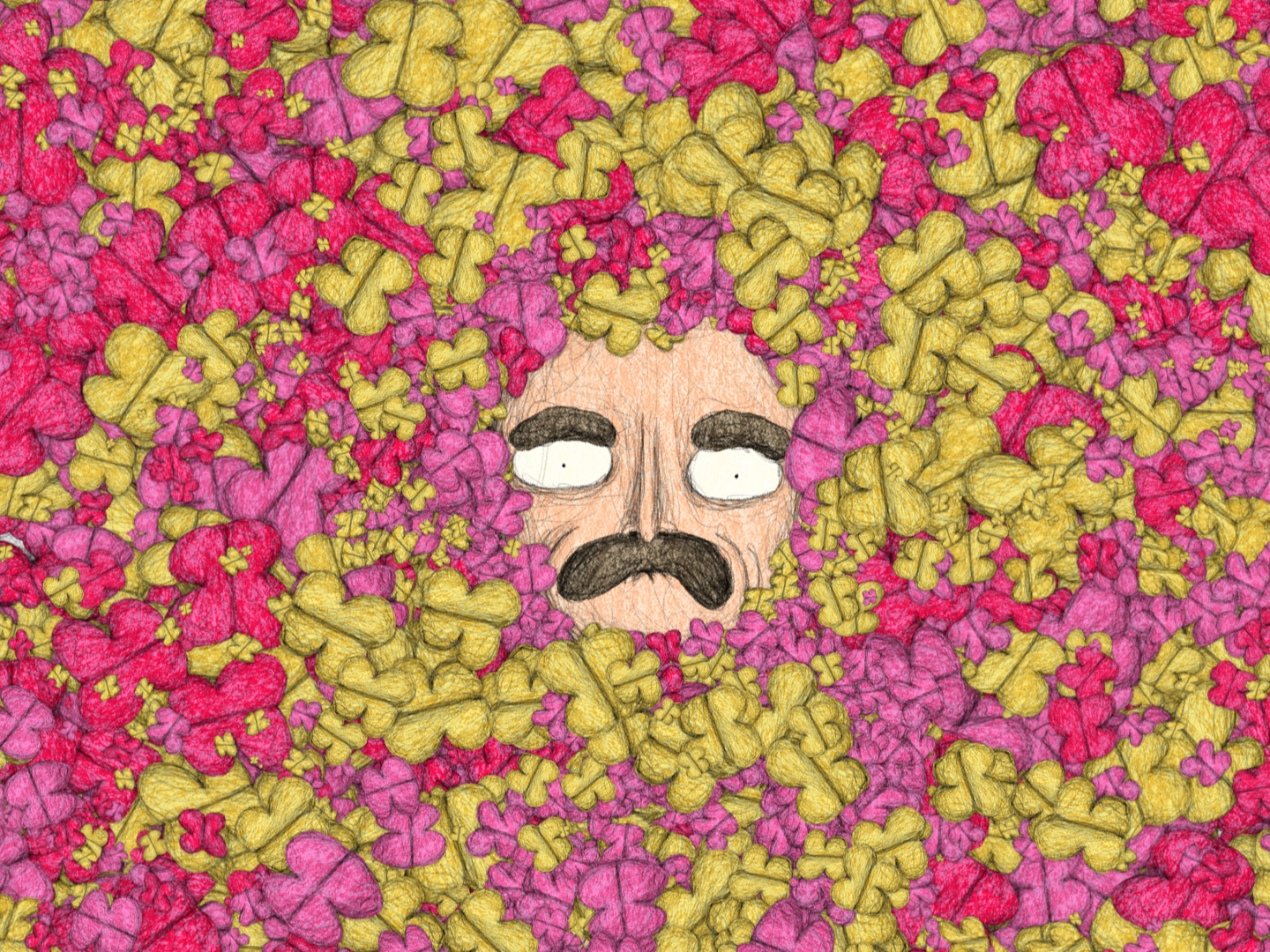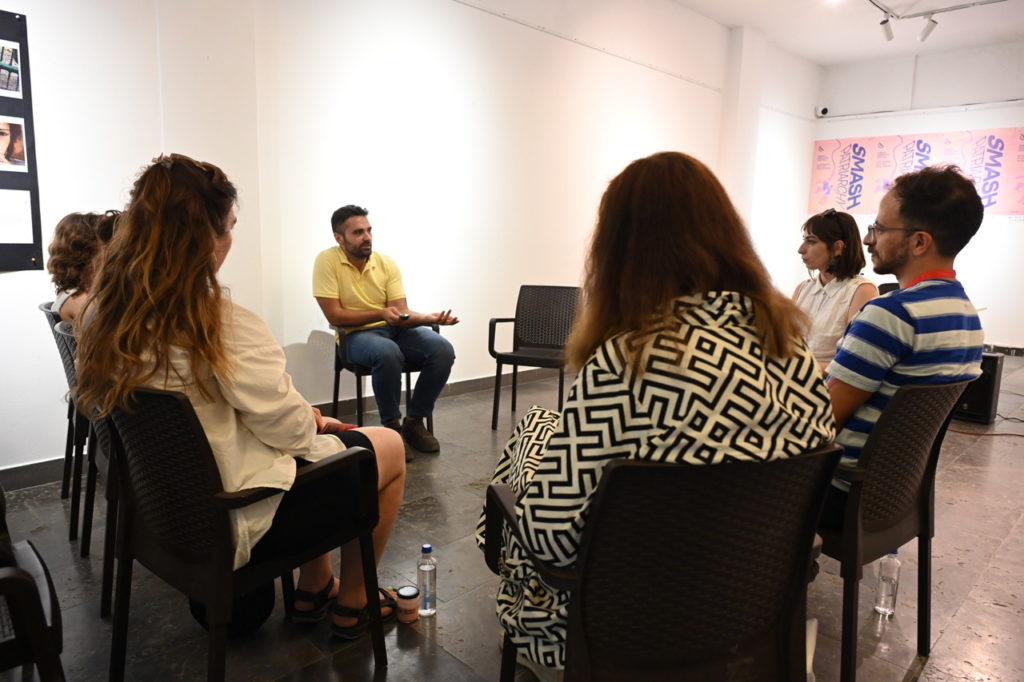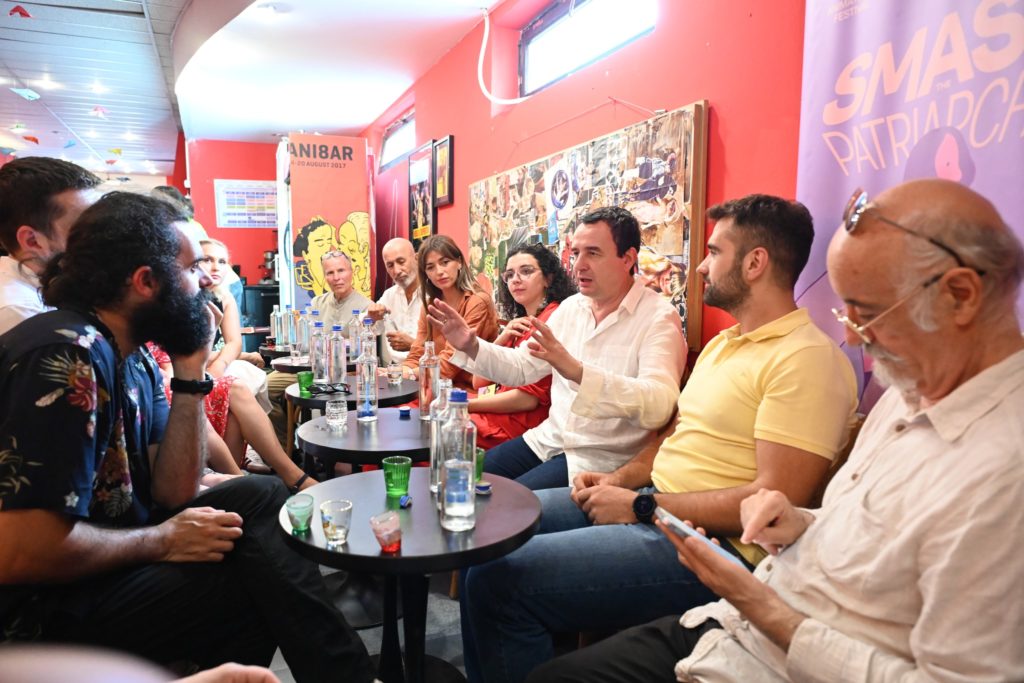Pentola Learns to Fly

Insight the myth of the hero and gender perceptions through the masculine icons of cinema, Leo Černic's film tells it all.
Pentola does not like beans. But beans are everything he gets from his wife for dinner. Both presented sitting at the dinner table, while, heart-shaped balloons surround them. His wife sipping the bean dish, while he looks at them, both the beans and his wife, with disgust. Pentola hates beans! And this time, he finally gathered the courage to tell his wife. She got angry, even cried, and slapped him hard enough to knock Pentola off his chair. The next thing we see is Pentola standing in front of the bathroom mirror. A moment of reflection, and he sheds his old and worn-out clothes off. He appears completely naked, wearing only a red Superman cape on his back.
Pentola wants to fly!
And so, he sets off, leaving through the window of his home’s bathroom to explore the wild world outside. As he sees a cliff, he rushes to take the leap to fly. After all, he wears the red Superman cape. But at the edge of the cliff, he realizes he cannot fly and falls like a heavy stone. When he wakes up, he sees Batman beside him.
“Pentola” is a short animated film, with a duration of 7 minutes and 12 seconds, directed by Leo Černic and produced by Chiara Magri. The film unfolds a sensitive and powerful story, filled with emotion and symbolism. In this short film, Leo Černic presents a simple yet profoundly emotional story, with the character Pentola at its center. Pentola cannot find a hero in his partner but becomes a hero to someone else. From the very first moment of his introduction, Pentola appears as a weak and inadequate figure. Someone who simply lacks the courage to tell his wife that he hates beans. Pentola questions the concept of heroism and the role we play in someone else’s life. He reminds us of how subjective perceptions can be and how essential it is to appreciate and respect each other’s differences.
Director Černic deliberately personifies Pentola through the Superman cape and introduces the character of Batman, for whom Pentola falls in love and becomes a hero. Superman and Batman, two iconic superheroes of American pop culture, have had a profound influence on the perception of masculine identity through cinema. As figures embodying the ideals of strength, bravery, and heroism, these two characters have become typical examples of masculinity and have played a significant role in shaping cultural perceptions of what it means to be a man.
Superman, with powers akin to a god and an unwavering sense of justice, represents the epitome of traditional masculinity. His chiseled physique, muscular build, and heroic acts embody the classic “hero” stereotype. Over the decades, Superman has been held up as an aspirational figure for boys and men, reinforcing the idea that physical strength, stoicism, and self-sacrifice are essential traits of a “real man.” However, this narrow representation of masculinity has also faced criticism for perpetuating unrealistic standards that may be harmful to those who don’t fit into these conventional molds. Černic’s portrayal of Superman through Pentola shatters this myth and challenges these perceptions by calling on the audience to have the courage to defy these norms and find themselves, their own hero, within the confines of normalized societies. Pentola defies them and learns to fly.
Leonora Aliu





